- You are here:
- Home »
- Indoor Plants
- » Concrete Leaf Care Guide
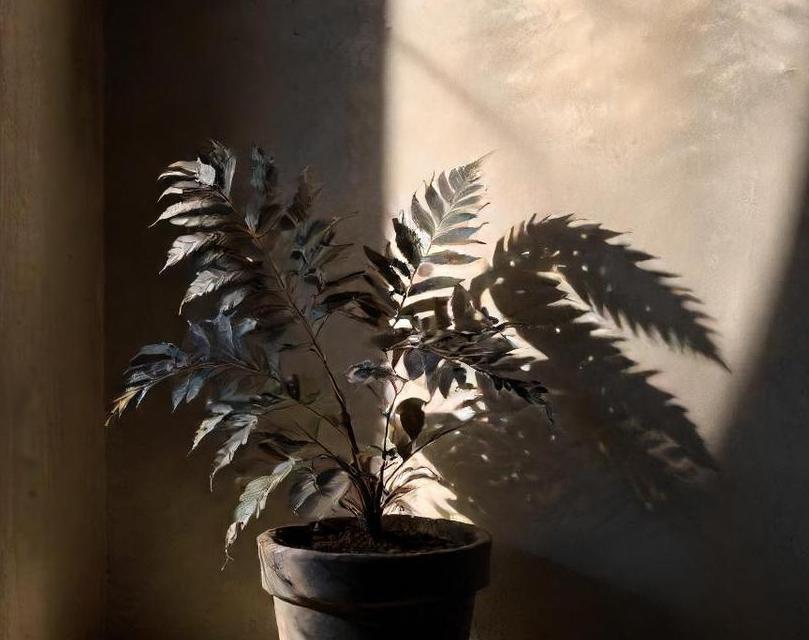
Concrete Leaf Care Guide
Indoor plants have long been cherished for their ability to bring life and vitality into our homes, but few are as striking and unique as the concrete leaf. This captivating plant, with its intriguing botanical characteristics and rich historical significance, has become a favorite among plant enthusiasts and interior decorators alike. In this comprehensive guide, we will delve into the world of concrete leaf plants, exploring their origins, cultural significance, and how to care for them in your own home.
Contents
- 1 What Is Concrete Leaf?
- 2 Botanical Characteristics
- 3 Historical And Cultural Significance
- 4 Common Names And Varieties
- 5 Light Requirements
- 6 Soil Requirements
- 7 Temperature Requirements
- 8 Humidity Requirements
- 9 Watering Needs For Concrete Leaf
- 10 Fertilization
- 11 How To Plant Concrete Leaf
- 12 Potting
- 13 Pruning Techniques For Concrete Leaf
- 14 Propagation Methods For Concrete Leaf
- 15 Troubleshooting Problems With Planting Concrete Leaf Indoors
- 16 Conclusion
- 17 FAQS
What Is Concrete Leaf?
The concrete leaf plant, scientifically known as Xerographica aridus, is a member of the succulent family, native to arid regions of Central and South America. It is characterized by its thick, fleshy leaves that grow in a rosette formation, resembling the shape of a rose. These leaves are typically a bluish-green color and have a waxy texture, helping the plant to retain moisture in its harsh natural environment.
One of the most distinctive features of the concrete leaf plant is its ability to thrive in low-maintenance conditions. It has adapted to survive in dry, sandy soils with minimal water, making it an excellent choice for indoor gardening enthusiasts who may not have a green thumb.
Botanical Characteristics
Leaf Structure
The leaves of the concrete leaf plant are its most prominent feature, growing in a tight rosette pattern that can reach up to 12 inches in diameter. Each leaf is thick and fleshy, with a smooth, waxy surface that helps to prevent water loss. The leaves are typically arranged in a spiral formation, with newer leaves emerging from the center of the rosette and older leaves forming a protective outer layer.
Flowers
While the concrete leaf plant is primarily grown for its foliage, it does produce small flowers under the right conditions. These flowers are typically white or pale pink in color and appear on tall, slender stalks that emerge from the center of the rosette. While not particularly showy, the flowers add an extra element of interest to the plant and attract pollinators in its native habitat.
Growth Habit
In its natural habitat, the concrete leaf plant is a slow-growing species, taking several years to reach maturity. However, when grown in optimal conditions indoors, it can grow more quickly, particularly during the warmer months. It is a relatively low-maintenance plant, requiring only occasional watering and minimal fertilization to thrive.
Propagation
Propagating concrete leaf plants is relatively straightforward and can be done through division or by collecting offsets, which are small plantlets that grow around the base of the parent plant. These offsets can be carefully removed and planted in their own pots, where they will quickly establish roots and begin to grow into mature plants.
Historical And Cultural Significance

Indigenous Uses
In its native range, the concrete leaf plant has been used for centuries by indigenous peoples for a variety of purposes. The leaves of the plant were traditionally harvested and dried to make fiber for weaving baskets, mats, and other useful items. The plant’s ability to thrive in dry, sandy soils also made it a valuable resource for erosion control in arid regions.
Ritual And Symbolism
In addition to its practical uses, the concrete leaf plant also holds cultural significance in many indigenous cultures. It is often associated with strength, resilience, and longevity, due to its ability to survive in harsh conditions. In some cultures, the plant is believed to possess protective properties and is used in rituals and ceremonies to ward off evil spirits and bring good luck.
Modern Cultivation
Today, the concrete leaf plant is primarily grown as an ornamental species, prized for its unique appearance and low-maintenance nature. It has gained popularity among indoor gardening enthusiasts and is often used as a focal point in succulent gardens and terrariums. Its striking foliage and unusual growth habit make it a favorite among collectors and interior decorators alike.
Common Names And Varieties
The concrete leaf plant is known by several common names, including:
- Concrete Leaf
- Xerographica aridus
- Rose Succulent
- Sempervivum arachnoideum
While there is only one recognized species of concrete leaf plant (Xerographica aridus), there are several cultivars and hybrids available to collectors. These varieties may differ in color, size, and growth habit, but all share the same basic characteristics that make the concrete leaf plant so unique.
Some popular varieties of concrete leaf plants include:
- Xerographica ‘Big Boy’: A larger, more robust variety with leaves that can grow up to 18 inches in diameter.
- Xerographica ‘Mini’: A smaller, more compact variety that is well-suited to small spaces and containers.
- Xerographica ‘Variegata’: A variegated variety with leaves that feature contrasting colors and patterns, adding extra visual interest to the plant.
The concrete leaf plant is a truly remarkable species, with its striking foliage, unique growth habit, and rich cultural history. Whether grown for its practical uses or simply admired for its beauty, this fascinating plant has earned its place as a favorite among indoor gardening enthusiasts around the world. With proper care and attention, the concrete leaf plant can thrive in a variety of environments, bringing a touch of natural elegance to any home or garden.
Light Requirements
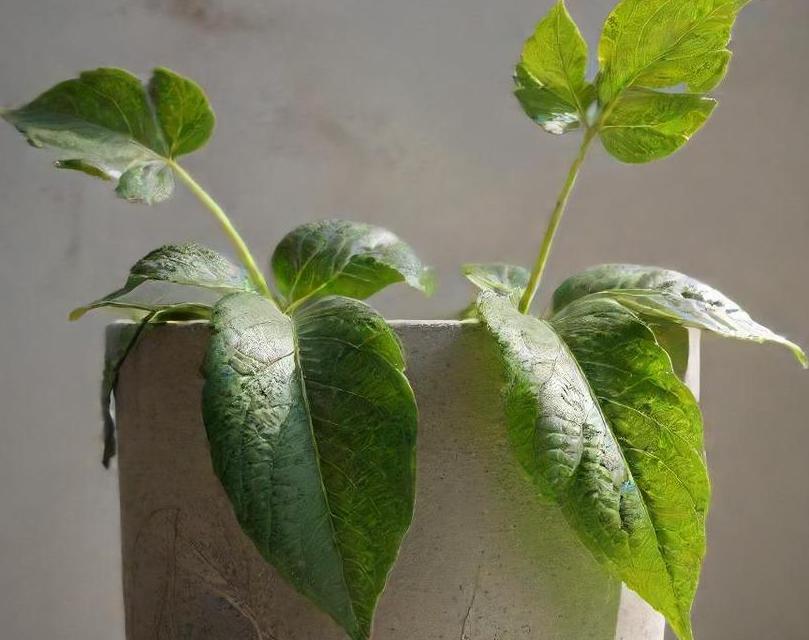
Concrete Leaf plants, also known as Epipremnum aureum, are popular indoor plants known for their striking foliage and ease of care. Originating from tropical regions of Southeast Asia, these plants have become a staple in homes and offices around the world due to their adaptability to various indoor conditions and their air-purifying qualities.
Concrete Leaf plants are valued not only for their aesthetic appeal but also for their ability to improve indoor air quality by removing toxins such as formaldehyde, xylene, and benzene from the air. Additionally, they are low-maintenance plants, making them ideal for beginners and busy individuals who may not have the time to dedicate to more high-maintenance plants.
Light is a crucial factor in the growth and development of Concrete Leaf plants. While these plants can tolerate low light conditions, they thrive in bright, indirect light. Placing them near a north or east-facing window where they can receive gentle morning or filtered light throughout the day is ideal.
Direct sunlight should be avoided as it can scorch the delicate leaves of the plant. However, if growing indoors where natural light is limited, Concrete Leaf plants can also adapt to artificial lighting. Supplemental fluorescent or LED grow lights can be used to provide the necessary light intensity for optimal growth.
It’s essential to monitor the plant closely and adjust its placement accordingly. Signs of inadequate light exposure include leggy growth with elongated stems and pale, yellowing leaves. On the other hand, too much direct sunlight can result in sunburned leaves with brown or crispy edges.
Regularly rotating the plant every few weeks ensures even growth and prevents one side from becoming leggy due to uneven light distribution. Overall, maintaining a balance of bright, indirect light is key to keeping Concrete Leaf plants healthy and vibrant indoors.
Soil Requirements
Proper soil composition is essential for the overall health and well-being of Concrete Leaf plants. These plants prefer a well-draining potting mix that retains moisture without becoming waterlogged. A combination of peat moss, perlite, and coarse sand or orchid bark works well to provide adequate drainage while retaining some moisture.
When repotting or planting a new Concrete Leaf plant, choose a pot with drainage holes to prevent water from pooling at the bottom, which can lead to root rot. Additionally, using a pot that is slightly larger than the plant’s current root ball allows room for growth without excessive soil retention.
Regularly check the soil moisture level by inserting your finger into the soil up to the first knuckle. If the soil feels dry to the touch, it’s time to water the plant. Avoid overwatering, as this can suffocate the roots and promote fungal growth. Allow the soil to dry out slightly between waterings, especially during the winter months when the plant’s growth slows.
Fertilizing Concrete Leaf plants is essential for providing them with the necessary nutrients for healthy growth. During the growing season in spring and summer, use a balanced liquid fertilizer diluted to half strength every two to four weeks. Reduce fertilization frequency during the fall and winter months when the plant is dormant.
Temperature Requirements
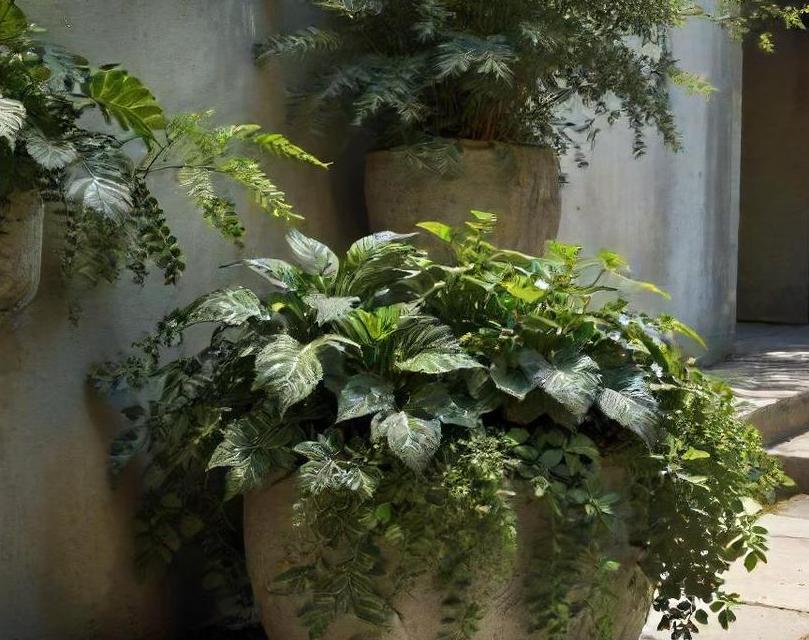
Concrete Leaf plants thrive in warm, tropical temperatures similar to their native habitat. Ideally, indoor temperatures should be maintained between 65°F to 85°F (18°C to 29°C) year-round for optimal growth. However, these plants can tolerate slightly cooler temperatures down to 50°F (10°C) for short periods.
Avoid placing Concrete Leaf plants near drafts or air vents, as sudden temperature fluctuations can stress the plant and lead to leaf yellowing or dropping. During the winter months, protect the plant from cold drafts by placing it away from windows and doors or using a sheer curtain as a barrier.
In regions with cold winters, it’s essential to provide adequate heating to maintain a consistent temperature indoors. Using a room heater or placing the plant near a heat source such as a radiator can help prevent cold damage during the winter months.
During the summer, monitor indoor temperatures and humidity levels, especially if the plant is placed near air conditioning units or in direct sunlight. Providing ample airflow and ventilation helps prevent heat stress and allows the plant to thrive in warmer conditions.
Humidity Requirements
Humidity levels play a crucial role in the health and well-being of Concrete Leaf plants, as they originate from humid tropical climates. While these plants can tolerate average indoor humidity levels, they prefer higher humidity levels between 50% to 70%.
In environments with low humidity, such as centrally heated or air-conditioned spaces, it’s essential to increase humidity levels to prevent the plant’s leaves from drying out and browning at the edges. There are several methods to increase humidity around Concrete Leaf plants:
-
Misting: Regularly misting the leaves with room temperature water helps increase humidity levels around the plant. Use a fine mist sprayer to avoid water droplets from collecting on the leaves, which can lead to fungal diseases.
-
Humidifier: Using a humidifier in the room where the Concrete Leaf plant is located is an effective way to maintain consistent humidity levels. Place the humidifier near the plant or use a small portable humidifier for targeted humidity control.
-
Pebble Tray: Place a shallow tray filled with water and pebbles near the plant’s pot. As the water evaporates, it increases humidity levels around the plant. Ensure the bottom of the pot does not sit directly in the water to prevent overwatering.
-
Grouping Plants: Cluster multiple plants together to create a microclimate with higher humidity levels. The collective transpiration of the plants increases humidity in the surrounding air.
-
Terrariums: Placing Concrete Leaf plants in a terrarium or enclosed glass container helps create a humid environment ideal for their growth. Ensure proper ventilation to prevent fungal growth and maintain airflow.
Regularly monitor humidity levels using a hygrometer and adjust humidity-boosting methods as needed to maintain optimal conditions for the plant’s growth and health.
Concrete Leaf plants are versatile and low-maintenance indoor plants that add beauty and freshness to any indoor space. By understanding and meeting their light, soil, temperature, and humidity requirements, you can ensure the optimal growth and health of these tropical beauties. Provide your Concrete Leaf plant with bright, indirect light, a well-draining potting mix, and consistent temperatures between 65°F to 85°F (18°C to 29°C). Maintain humidity levels between 50% to 70% to prevent leaf drying and browning. With proper care and attention to their needs, Concrete Leaf plants will reward you with lush foliage and improved indoor air quality, making them a valuable addition to your home or office décor. So, go ahead, bring home a Concrete Leaf plant, and enjoy the beauty and benefits it brings to your indoor space!
Watering Needs For Concrete Leaf
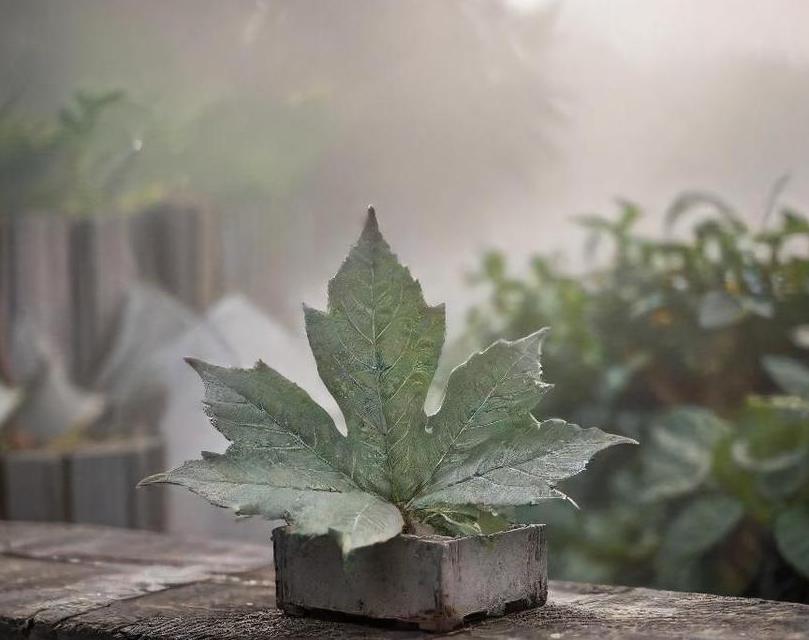
Indoor plants have long been cherished for their ability to bring nature into our homes, adding beauty, tranquility, and even health benefits to our indoor spaces. One such intriguing plant is the Concrete Leaf (Xanadu philodendron), renowned for its striking foliage and ease of care.
Watering is a crucial aspect of caring for Concrete Leaf plants, as improper watering can lead to issues such as root rot or dehydration. Understanding the plant’s water requirements is essential for maintaining its health and vitality.
Concrete Leaf plants prefer consistently moist soil, but they are susceptible to root rot if their roots sit in waterlogged soil for prolonged periods. To avoid this, it’s essential to water the plant thoroughly but allow the top inch of soil to dry out slightly between waterings. This balance ensures that the plant’s roots receive adequate moisture without becoming waterlogged.
During the growing season, typically spring and summer, Concrete Leaf plants may require more frequent watering as they actively grow and photosynthesize. In contrast, during the dormant period in fall and winter, their water needs decrease, and less frequent watering is necessary.
One effective way to determine when to water is by checking the moisture level of the soil. Inserting your finger into the soil up to the first knuckle will give you an indication of whether it’s time to water. If the soil feels dry at this depth, it’s time to water the plant. However, if it feels moist, it’s best to wait a few days before checking again.
When watering Concrete Leaf plants, it’s essential to water them at the base and avoid wetting the foliage. Wet foliage can increase the risk of fungal diseases and leaf damage, so aim to water directly into the soil around the base of the plant.
Fertilization
Proper fertilization is key to promoting healthy growth and vibrant foliage in Concrete Leaf plants. While these plants are not heavy feeders, they still benefit from occasional fertilization during the growing season.
A balanced, water-soluble fertilizer formulated for indoor plants is ideal for feeding Concrete Leaf plants. Look for a fertilizer with equal parts nitrogen, phosphorus, and potassium (such as a 10-10-10 or 20-20-20 formula) to provide essential nutrients without overfeeding.
During the growing season, fertilize Concrete Leaf plants every four to six weeks, diluting the fertilizer to half or quarter strength to prevent nutrient buildup in the soil. Avoid fertilizing during the dormant period in fall and winter, as the plant’s growth slows, and it requires fewer nutrients.
When applying fertilizer, water the plant thoroughly beforehand to ensure that the soil is moist. Then, apply the diluted fertilizer according to the package instructions, pouring it evenly around the base of the plant. After fertilizing, water the plant again to help distribute the nutrients throughout the soil.
Be cautious not to overfertilize Concrete Leaf plants, as excessive fertilizer can lead to salt buildup in the soil, causing root damage and hindering the plant’s growth. Always follow the recommended dosage on the fertilizer package and monitor the plant for any signs of nutrient deficiency or excess.
How To Plant Concrete Leaf
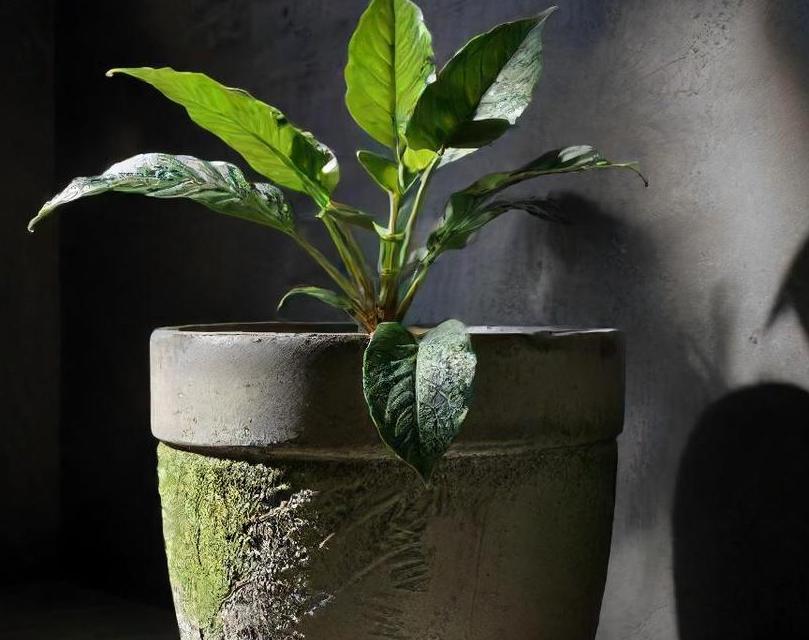
Planting Concrete Leaf plants properly sets the foundation for their growth and development, ensuring they thrive in their indoor environment. Whether you’re repotting an existing plant or planting a new one, following these steps will help establish a healthy growing environment for your Concrete Leaf.
Potting
-
Selecting a Pot: Choose a pot that is slightly larger than the plant’s current container, with drainage holes at the bottom to prevent waterlogging. Terra cotta or ceramic pots are ideal, as they allow for better airflow and moisture regulation than plastic containers.
-
Preparing the Pot: Fill the bottom of the pot with a layer of gravel or small rocks to improve drainage and prevent water from pooling at the bottom. Then, add a layer of high-quality potting mix formulated for indoor plants, ensuring it is well-draining and nutrient-rich.
-
Removing the Plant: Carefully remove the Concrete Leaf plant from its current container, gently teasing apart any tangled roots to promote healthy growth. Avoid pulling on the plant or disturbing the roots excessively, as this can cause damage and stress to the plant.
-
Planting: Place the plant in the center of the pot, ensuring that the top of the root ball sits slightly below the rim of the pot. Fill in the remaining space around the plant with potting mix, gently pressing it down to secure the plant in place.
-
Watering: After planting, water the Concrete Leaf thoroughly to settle the soil and hydrate the roots. Allow any excess water to drain from the bottom of the pot, ensuring that the soil is evenly moist but not waterlogged.
-
Placement: Choose a location for your Concrete Leaf plant that receives bright, indirect sunlight, such as near a north or east-facing window. Avoid placing the plant in direct sunlight, as this can scorch the leaves and cause them to become discolored.
-
Maintenance: Monitor the plant regularly for signs of stress or nutrient deficiency, such as yellowing leaves or stunted growth. Adjust watering and fertilization as needed to promote healthy growth and ensure the plant thrives in its new environment.
Concrete Leaf plants are an excellent choice for indoor plant enthusiasts looking to add a touch of tropical elegance to their home or office space. With their striking foliage and easy-care nature, these plants bring beauty and vitality to any indoor setting. By understanding and meeting their watering needs, fertilizing appropriately, and planting them correctly, you can ensure that your Concrete Leaf plants thrive and flourish for years to come. With proper care and attention, these captivating plants will reward you with lush growth and a vibrant presence in your indoor oasis.
Pruning Techniques For Concrete Leaf
The Concrete Leaf (Alocasia amazonica), also known as the African Mask plant, is a striking indoor plant prized for its large, glossy leaves adorned with intricate patterns resembling veins of concrete. Native to the tropical rainforests of Southeast Asia, this plant belongs to the Araceae family and thrives in warm, humid environments.
The distinctive foliage of the Concrete Leaf makes it a popular choice for indoor gardening enthusiasts seeking to add a touch of exoticism to their homes or offices. While this plant can reach impressive heights in its natural habitat, it can be effectively grown in containers indoors, provided the right conditions are met.
Pruning is an essential aspect of caring for Concrete Leaf plants, helping to maintain their shape, remove dead or damaged foliage, and encourage healthy growth. Here are some pruning techniques to keep your Concrete Leaf thriving:
1. Removing Dead Or Yellowing Leaves
Inspect your Concrete Leaf regularly for any signs of yellowing or wilting leaves. Using clean, sharp scissors or pruning shears, carefully snip off any dead or yellowing foliage at the base of the stem. This not only improves the plant’s appearance but also prevents the spread of disease.
2. Trimming Overgrown Leaves
As Concrete Leaf plants grow, their leaves may become overcrowded or overshadow neighboring foliage. To prevent this, trim back any excessively large or overgrown leaves, cutting them near the base of the stem. This allows for better airflow and light penetration, promoting overall plant health.
3. Pruning Diseased Or Damaged Areas
If you notice any signs of disease or pest infestation on your Concrete Leaf plant, take prompt action to prune affected areas. Trim away any diseased or damaged sections of the plant, ensuring to sanitize your pruning tools between cuts to prevent the spread of infection.
4. Shaping The Plant
To maintain a compact and symmetrical appearance, consider shaping your Concrete Leaf plant through selective pruning. Remove any unwanted shoots or side growth, focusing on maintaining an aesthetically pleasing form.
Propagation Methods For Concrete Leaf
Propagation allows you to expand your collection of Concrete Leaf plants or share them with friends and fellow gardening enthusiasts. Here are some effective propagation methods for propagating Concrete Leaf:
1. Division
Division is one of the simplest and most reliable methods for propagating Concrete Leaf plants. To propagate through division, carefully remove the plant from its pot and gently tease apart the root ball into smaller sections, ensuring each division has both roots and foliage. Plant the divisions in individual pots filled with well-draining potting mix, water thoroughly, and place in a warm, humid environment to encourage root development.
2. Stem Cuttings
Stem cuttings offer another effective means of propagating Concrete Leaf plants. Using clean, sharp scissors or pruning shears, snip off a healthy stem segment, ensuring it has at least one leaf node. Remove any lower leaves to expose the node, then plant the cutting in a small pot filled with moist potting mix. Keep the soil consistently moist and provide indirect light until roots develop, at which point you can transplant the cutting into a larger container.
3. Offsets
Some varieties of Concrete Leaf plants produce offsets or baby plants around the base of the main plant. To propagate using offsets, carefully separate them from the parent plant, ensuring each offset has its own roots. Plant the offsets in individual pots with well-draining potting mix, water thoroughly, and provide the same care as mature plants.
4. Air Layering
Air layering is a more advanced propagation method that involves encouraging roots to form on a portion of the stem while still attached to the parent plant. To propagate via air layering, select a healthy stem and make a shallow incision or remove a small section of bark. Apply rooting hormone to the wounded area, then wrap it in moist sphagnum moss and secure with plastic wrap. Keep the moss moist and wait for roots to develop before detaching the new plant from the parent.
Troubleshooting Problems With Planting Concrete Leaf Indoors
Despite their resilience, Concrete Leaf plants may encounter various issues when grown indoors. Understanding common problems and their solutions is crucial for maintaining the health and vitality of your plants. Here are some troubleshooting tips:
1. Yellowing Leaves
Yellowing leaves are often a sign of overwatering or underwatering. Ensure your Concrete Leaf plant is receiving the right amount of water by checking the soil moisture regularly. Adjust your watering frequency accordingly, allowing the soil to dry out slightly between waterings.
2. Leaf Curling
Leaf curling can be caused by insufficient humidity or exposure to cold drafts. Increase humidity around your Concrete Leaf plant by placing a humidifier nearby or placing a tray filled with water and pebbles beneath the pot. Avoid placing the plant near doors or windows where it may be exposed to drafts.
3. Brown Leaf Tips
Brown leaf tips are typically caused by underwatering, overfertilization, or low humidity. Ensure your Concrete Leaf plant is receiving adequate moisture by watering consistently and providing supplementary humidity if necessary. Avoid overfertilizing and flush the soil periodically to prevent salt buildup.
4. Pest Infestations
Common pests such as aphids, spider mites, and mealybugs can occasionally target Concrete Leaf plants. Monitor your plants regularly for signs of pest infestation, such as stippled leaves or webbing. Treat affected plants promptly with insecticidal soap or neem oil, ensuring to thoroughly coat the foliage and stems.
Conclusion
In conclusion, the Concrete Leaf plant is a captivating addition to any indoor garden, boasting lush foliage and unique patterns reminiscent of concrete veins. By mastering pruning techniques, propagation methods, and troubleshooting strategies, you can ensure your Concrete Leaf plants thrive and flourish in their indoor environment. With proper care and attention, these striking plants will continue to bring joy and beauty to your home or office for years to come.
FAQS
What Is An Indoor Plant: Concrete Leaf?
An Indoor Plant: Concrete Leaf is a unique botanical creation where real leaves are used to cast concrete, resulting in stunning decorative pieces that bring a touch of nature indoors. These concrete leaves are meticulously crafted to preserve the intricate details of the original foliage, creating eye-catching sculptures that serve as both art and functional planters.
How Are Concrete Leaves Made?
Concrete Leaves are made through a meticulous process that involves carefully selecting real leaves, applying release agents, and then pouring concrete over them. Once the concrete sets, the leaf is peeled away, leaving behind an imprint of its intricate veins and texture. The concrete is then cured to strengthen it, and finishing touches such as sealing or painting may be applied for added durability and aesthetic appeal.
What Types Of Plants Can Be Grown In Concrete Leaves?
Concrete Leaves can accommodate a wide variety of plants, ranging from small succulents and cacti to ferns and trailing vines. The size and depth of the leaf determine the type of plant that can thrive within it. Typically, plants that prefer well-draining soil and moderate moisture levels are best suited for Concrete Leaves.
How Do I Care For An Indoor Plant: Concrete Leaf?
Caring for an Indoor Plant: Concrete Leaf is relatively straightforward. Ensure that the plant receives adequate sunlight according to its species’ requirements. Water the plant as needed, allowing excess water to drain out of the leaf’s drainage holes to prevent waterlogging. Monitor the soil moisture regularly, and fertilize the plant periodically during its growing season.
Can Concrete Leaves Be Used Outdoors?
While Concrete Leaves are primarily designed for indoor use, they can also be displayed outdoors in suitable conditions. However, exposure to harsh weather elements such as direct sunlight, heavy rainfall, and freezing temperatures may deteriorate the concrete over time. To prolong their lifespan outdoors, consider placing them in sheltered areas or applying a weather-resistant sealant.
Are Concrete Leaves Heavy?
Yes, Concrete Leaves tend to be heavy due to the nature of the material used in their construction. The weight varies depending on the size and thickness of the leaf, as well as the density of the concrete mixture. When positioning Concrete Leaves, ensure that the supporting surface can withstand their weight to prevent any damage or accidents.
Are Concrete Leaves Environmentally Friendly?
Concrete Leaves can be considered relatively eco-friendly compared to some other decorative materials. The use of natural leaves as molds reduces the need for synthetic or disposable materials in their production. Additionally, concrete is a durable and long-lasting material that can withstand years of use without needing replacement, reducing overall waste. However, it’s essential to choose concrete suppliers that prioritize sustainable practices and use eco-friendly additives whenever possible.
